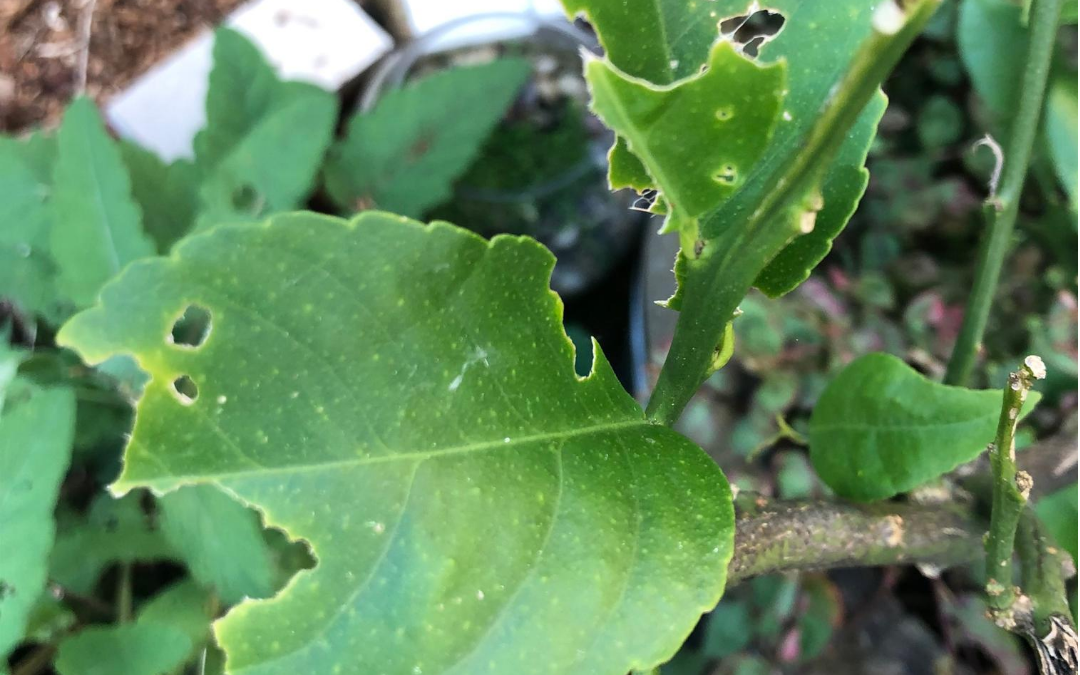Deficiency diseases in citrus

What is the Ideal pH for citrus?
Citrus likes a close to neutral pH i.e. between 6 (lightly acid) and 7. High alkaline soil prevents the absorption of iron, magnesium and zinc which are necessary for the production of chlorophyll, the green substance of leaves. Various deficiency diseases result. It is important to pH test your soil before deciding on a course of action.
Iron deficiency
Chlorosis is an iron deficiency disease caused by high alkaline soil. Chlorosis shows up in older leaves as yellowing between the veins and as pale green or yellow leaves in new growth. This can be remedied, if caught early enough, by the application of an acidic citrus fertilizer. Buy a fertiliser that is a specific citrus one from your nursery.
Nitrogen deficiency
When the soil is nitrogen deficient, old leaves will be yellow but new ones green. Apply 0.6 of a cup of urea or old poultry manure to a 9 litre watering can of water and apply around the tree’s dripline early autumn. Avoid application in spring as nitrogen causes soft, sappy growth attractive to both citrus leafminer and gall wasp. In winter, nitrogen take up is reduced due to low soil temperature and low root activity so the problem may right itself as the temperature warms.
Zinc deficiency
Leaves will generally be small, veins will be green and the rest of the leaf a mottled yellow and green. Use a foliar spray such as Seasol or Maxicrop to add trace elements, or chelated zinc.
Manganese deficiency
The base and tip of the leaf will form dark green triangles while the middle will show a blotch of yellow. Treat with Epsom salts. Epsom salts in too great a concentration will burn your leaves so add a tablespoon only to a 9 litre watering can of water and water around the tree’s dripline. If there is little or no change, repeat 3 weeks later. Epsom salts can generally be bought at supermarkets.
Written by Robin-Gale Baker.
Read more citrus articles on our blog.
